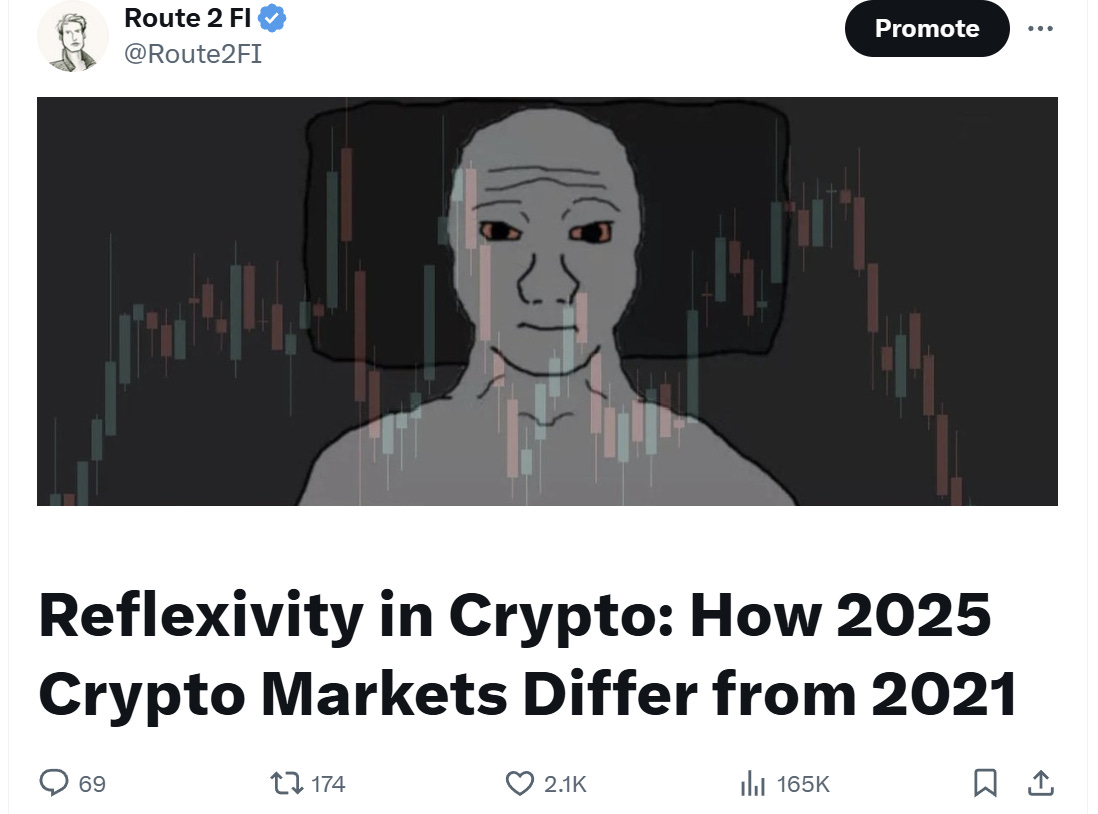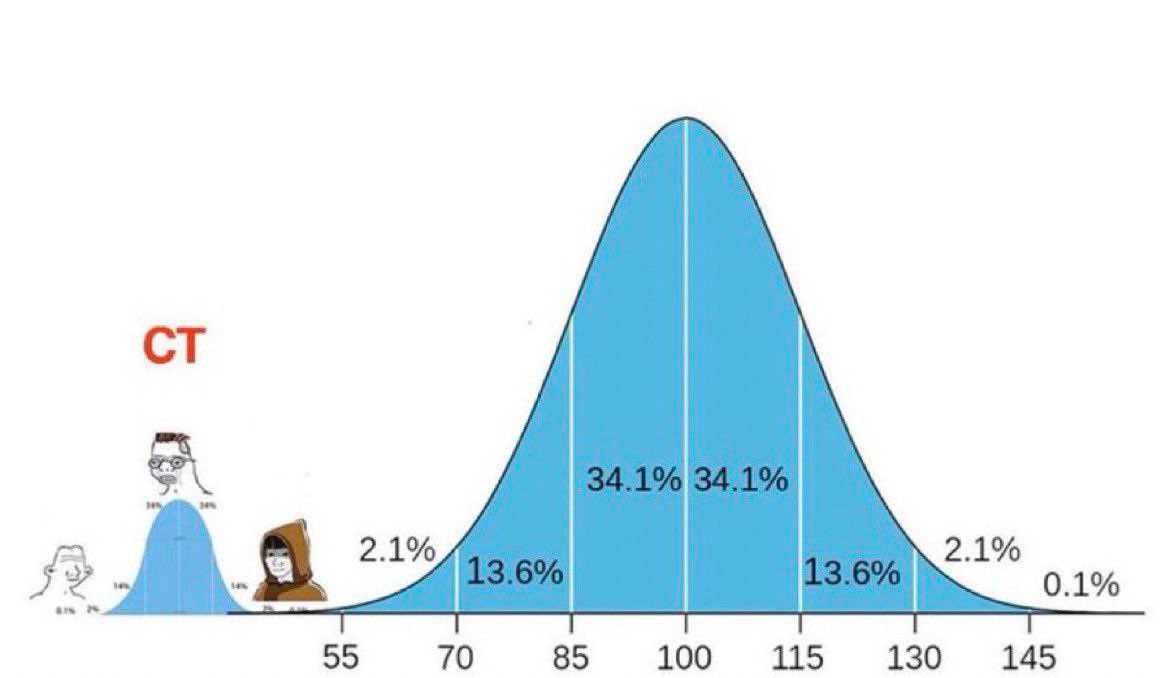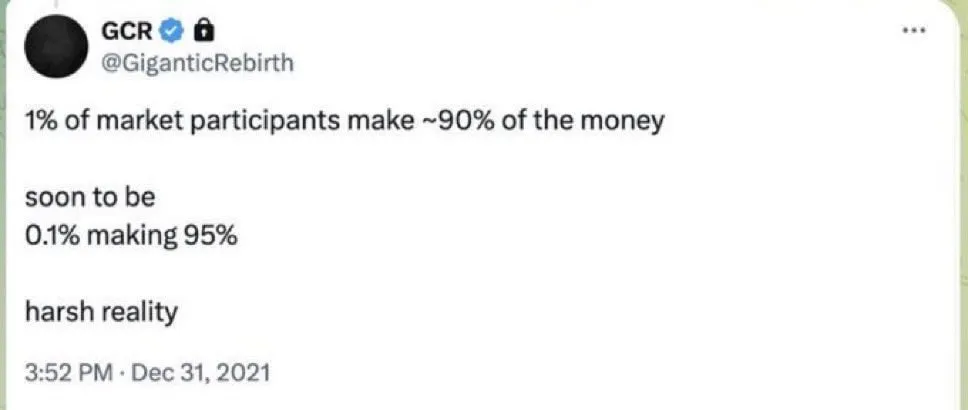Good morning, friends.
The cryptocurrency market is undergoing a profound transformation, and we must adjust our strategies and tactics, as the methods that worked in the past are no longer applicable.
The traditional "buy and hold (HODL)" strategy is gradually losing its effectiveness. With increased market volatility and the emergence of new projects, the conviction in long-term holding has become more fragile.
Nowadays, the survival law of the market is flexible trading, constantly adjusting positions, and seeking opportunities in a decentralized and highly uncertain environment.
Whether you can successfully adapt to this new landscape will determine whether you survive or be eliminated by the market.
Let's delve deeper and see if there is still a glimmer of hope in such a market.

Altcoin Casino: How to Survive in the Fragmented Cryptocurrency Market
For those who have entered the cryptocurrency market in the past year or a year and a half, this market is undergoing a profound transformation.
The "shortcut" to profitability through centralized exchanges, which was once easy, has now become increasingly complex. The market's operation is more like a casino than a traditional trading market, requiring investors to have unprecedented flexibility and acuity.
The traditional "buy and hold" strategy, although effective in the early cycles, is no longer applicable. Holding periods have become shorter and shorter, from weeks to even days (remember those old-timers telling us to just buy Altcoins at low prices and wait for the highs to sell?).
Behind this change is the constant emergence of new coins and new projects. Each new project is competing for market attention and capital, constantly challenging the position of existing projects.
Even events traditionally seen as positive can have unexpected consequences. For example, the launch of a high-profile MEME by Trump may attract a large number of new users to the cryptocurrency market, but it could also lead to a collapse in the value of many Altcoins. The beneficiaries are usually limited to BTC, Solana (SOL), and related MEME coins.
Many investors have learned a painful lesson - if their portfolio is not heavily weighted in BTC and SOL, they may suffer massive losses.
A similar situation occurred with the release of Berachain, which attracted a lot of attention and capital, but had an impact on the Abstract ecosystem.
In this dynamic and unpredictable market, the wisest approach is to accept that volatility is the norm and recognize that as new coins, new chains, and new projects continue to emerge, this volatility may further intensify.
As a result, many investors are adjusting their strategies, increasing their holdings of BTC and stablecoins, while significantly reducing their long-term Altcoin positions. The market's focus has also shifted from "long-term investment" in Altcoins to tactical "short-term trading" operations.
The goal is to avoid becoming the "last believer" in those failed projects, watching their value go to zero.
At the current stage, near the end of the cycle, the risk-reward ratio of buying Altcoins other than BTC based on a long-term investment logic may not be ideal. Although Altcoins may be near the bottom, the likelihood of most coins, NFTs, or ecosystems hitting new highs simultaneously is decreasing.
The constant launch of new coins dilutes the market's attention and capital, making it increasingly difficult for existing projects to regain prominence.

The current cryptocurrency cycle is filled with unprecedented challenges, as the market is permeated by a stronger sense of uncertainty than ever before. This uncertainty is primarily due to the fact that even the most popular Altcoins, after experiencing significant declines, do not have enough confidence to confirm that they will rebound.
Reflecting on the cycles of 2017 and 2021, investors were usually confident in buying the dips of Altcoins, as long as their market capitalization (mcap) was not too low (usually below $100 million). The prevailing view at the time was that these coins would recover their value within the cycle, at least not completely disappear in the current cycle. Coins that gained early market attention tended to maintain their momentum and market position until the end of the cycle.
However, this cycle is completely different (yes, indeed). The market is flooded with various narratives and sub-narratives, each vying for the attention of investors, but this attention is often fleeting. Investors are now more cautious about "buying the dips" because the entire narrative of a coin can collapse at any time, rendering the investment worthless.

Unlike the past cycles centered on a single narrative, the current market presents multiple narrative-driven mini-cycles, each with its own peaks and troughs. BTC and Solana (SOL) are generally considered relatively safe choices, likely to recover their value, but for investors seeking high-multiple growth, their potential returns may not be attractive (after all, BTC has already risen 6x from the bottom, and SOL has risen 20x). The question is whether to allocate capital to areas such as AI cryptocurrencies. While these areas have recently gained attention, they have also retreated significantly from their historical highs, and there are no clear signs that they can regain their peaks.
The high fragmentation of the market makes it difficult for investors to accurately identify and capture emerging trends. Cryptocurrencies have always been a speculative market since their inception, although past cycles have tried to legitimize it by emphasizing "peer-reviewed blockchain technology," "solid fundamentals," and "real-world applications." However, this cycle seems to have abandoned this pretense and embraced a more realistic view: everything depends on how to attract and maintain the market's attention. This trend has led to a significant shortening of the attention cycle of investors. The "bull market cycle" that once lasted one to two years is now compressed into just a few months, weeks, or even days.
The current market appears to be experiencing a MEME super-cycle (or has it already ended?). However, even the most popular MEME coins have experienced significant declines from their peaks, further questioning the rationale of investing in them.

In the current cryptocurrency market, investors face a higher "bag-holding risk" than ever before. In past cycles, when coins experienced similar declines, investors would typically view it as an opportunity to buy the dips, as the likelihood of these coins rebounding was almost undoubtedly. However, the question now is whether these coins can regain their former market attention. The current market tends to favor the leading coins, rather than the underperforming projects. Even if certain projects have strong fundamentals, they may struggle to gain favor if they lack market hype.
Although MEME coins and AI projects have performed well in the current market, investors remain cautious about these trends, as the shift in market attention is often rapid and unpredictable. This widespread uncertainty stems from the overwhelming number of choices facing investors. Thousands of coins and projects in the cryptocurrency market are competing for attention, making it difficult for investors to determine which projects have genuine potential and which are just fleeting. The fragmentation and brevity of market attention make it challenging to form a long-term market consensus on any given project. It is worth considering whether this phenomenon has become the new normal in the cryptocurrency market, or if it is just a temporary condition in the current market environment.









